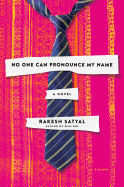
| Publisher: | Picador | |
| Genre: | Literary, Asian American, Fiction, LGBT, Gay | |
| ISBN: | 9781250112118 | |
| Pub Date: | May 2017 | |
| Price: | $26 |
| Starred | Fiction |
by Rakesh Satyal
No One Can Pronounce My Name, the second novel by Rakesh Satyal (Blue Boy), pays a humorous, loving visit to the Indian immigrant community of Cleveland, Ohio, where a handful of oddballs and outsiders come together to form a circle of support that changes their lives.
Middle-aged Harit doesn't know how to talk to his mother after his sister, Swati, dies in a freak accident. Shy and socially maladroit, he works in sales in a department store, where he becomes friends with flamboyant coworker Teddy, who introduces Harit to alcohol at their local T.G.I. Fridays.
Newly minted empty nester Ranjana thinks her husband, Mohan, has a girlfriend. Not wanting to become the subject of gossip, she keeps her suspicions from her friends and throws herself into writing a vampire novel. At her day job as a receptionist at a proctology clinic, she forges a friendship with Achyut, a young gay patient and bartender, leading her outside her comfort zone and bringing Harit into her orbit.
No One Can Pronounce My Name meditates on immigrants' lifelong struggle for acceptance in the U.S., but also demonstrates that the support of communities of friends can make all the difference. Though the main players' specific circumstances are different, all face loneliness and struggles with identity. Satyal delves deeply into each character's past and psyche, mining fragility and heartache like rare jewels. While the introspection at times slows the action, the natural outgrowth of situational comedy balances the pace. Satyal never plays his characters for fools, though, and book clubs will find rich fodder for discussion in this sparkling, deeply felt story of emotional growth. --Jaclyn Fulwood, blogger at Infinite Reads

| Publisher: | Little, Brown | |
| Genre: | Contemporary Women, General, Literary, Fiction, Historical | |
| ISBN: | 9780316314480 | |
| Pub Date: | April 2017 | |
| Price: | $26 |
| Fiction |
by Claire Cameron
Claire Cameron (The Bear) explores the lives of a modern-day archeologist and the skeleton she discovers in the compelling novel The Last Neanderthal.
Rose Gale is an ambitious archeologist obsessed with her latest find in a cave in France: the remains of a female Neanderthal buried intimately with a male Homo sapiens. The artifacts Rose uncovers, as well as the burial of the two species together, cast doubt on long-held theories about Neanderthals and modern humans. In a race against time, she works to unearth more evidence despite her advancing pregnancy.
About 45,000 years earlier, a Neanderthal family is living in that same region of France. Big Mother, the matriarch, is becoming frail as her oldest remaining daughter, Girl, comes of age. Cameron puts the reader in the mind of Girl to experience the world as she does: the comfort of family, the excitement of the summer fish run and the serious dangers inherent in her daily life.
The Last Neanderthal is emotionally engaging and, as it alternates millennia, echoes of the past arise in Rose's modern life. She and Girl are both pregnant and experiencing great changes in their lives. As Rose continues to excavate the skeleton, readers learn more about Girl's life in this immersive story that unites the two women across time. Cameron infuses the interrelated stories with warmth, enhanced by vivid details about Neanderthal experiences. --Suzan L. Jackson, freelance writer and author of Book by Book blog

| Publisher: | Holt | |
| Genre: | Literary, Fiction | |
| ISBN: | 9781250114143 | |
| Pub Date: | April 2017 | |
| Price: | $16 |
| Fiction |
by Brittany Newell
Lush, edgy, lyrical, bad-ass, pensive, taxing--it's hard to paint Oola into a picture that captures its striking prose and fearless curiosity about identity and obsession. In performance artist, drag queen, recent Stanford graduate and Pushcart nominee Brittany Newell's first novel, 25-year-old Leif housesits for his moneyed New England family's network of friends with empty domiciles around the world. Oola is a striking six-foot music student raised by a metal band roadie and a casino hostess. They meet at a hipster London flat party; and with the impulsiveness of unencumbered youth of means, they take off on a global romance in great houses across Europe, the Middle East, Canada and, finally, at a remote cabin in Big Sur.
As the sparkle of discovery shines on the hidden pleasures of sex, drugs, food, conversation and the mysteries of each other, Leif becomes obsessed with Oola's body and habits, turning his observations into what he envisions will be a novel of celebration. He boasts: "I loved to watch Oola in the shower.... I came to memorize her postures, the hygienic loop (rinse, wash, repeat) that, like prayers of digestion, lent me a glimmer of infinity via the banal."
Like Leif's book, Oola is a novel of discovery--ever shifting and digging deeper. It is a diary, a romance, a dark trip over the edge. Capturing today's zeitgeist of an experimental, hungry, indulgent youth, it also harkens back to the masculine, queer, trippy work of William Burroughs and Hubert Selby. But Newell is very much her own woman, and make no mistake. As the title suggests, this is Oola's story--not Leif's. --Bruce Jacobs, founding partner, Watermark Books & Cafe, Wichita, Kan.
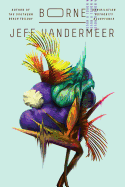
| Publisher: | MCD/Farrar, Straus & Giroux | |
| Genre: | Dystopian, Fantasy, General, Literary, Fiction | |
| ISBN: | 9780374115241 | |
| Pub Date: | April 2017 | |
| Price: | $26 |
| Science Fiction & Fantasy |
by Jeff VanderMeer
In the post-apocalyptic ruins of an unnamed city, a woman named Rachel survives by scavenging for food, water and biotech--living experimental refuse cast off by the defunct Company. She braves desperate fellow humans, inhuman organic horrors and the predatory Mord, a behemoth bear that terrorizes the city. Rachel brings her discoveries to Wick, her partner in love and survival, whose mysterious past with the Company helps him turn Rachel's treasures into drugs--for profit and personal use. Balcony Cliffs, their hidden compound, is precariously perched between Mord's territory and the territory of a rival biotech dealer called the Magician.
Rachel's latest find threatens to upend their uneasy existence. It's a blob clinging to Mord's fur, a thing neither plant nor animal that quickly becomes as threatening as it is unusual. Rachel names this amorphous entity Borne, and decides to keep it despite Wick's reservations. Borne speaks, grows and learns under Rachel's care, ever curious about its possible personhood and purpose--one that may decide the fate of Rachel, Wick and the city itself.
Jeff VanderMeer, author of the Southern Reach trilogy (Annihilation, Authority, Acceptance), proves himself a wizard of weird fiction with Borne. The titular creature is lovably charismatic, vaguely menacing and presents a peculiar parable of parenthood in its relationship with Rachel. The setting is a delightfully bizarre mix of post-apocalypse, dystopia and light science fiction, blended with the creeping unease of the unknowable that made Southern Reach so memorable, and delivered with VanderMeer's keen eye for natural--and unnatural--detail. --Tobias Mutter, freelance reviewer

| Publisher: | Pantheon Books | |
| Genre: | Comics & Graphic Novels, Manga, LGBT | |
| ISBN: | 9781101871515 | |
| Pub Date: | May 2017 | |
| Price: | $24.95 |
| Starred | Graphic Books |
by Gengoroh Tagame, trans. by Anne Ishii
A death in the family will always leave an empty place in someone's heart. Yaichi knows this well: both of his parents died in a freak car accident, leaving him and his twin, Ryo, to look after one another. In the years following, the brothers slowly became estranged, and then Ryo left Tokyo. Yaichi, now a single father of an energetic girl named Kana, has all but hidden his painful past when Canadian Mike Flanagan arrives on his doorstep as Ryo's grieving widower.
Gengoroh Tagame's beautiful manga novel My Brother's Husband disentangles family secrets and homophobia with endearing grace. Though her father is reluctant to open his home and heart to Mike, Kana is eager to learn everything about Canada and the uncles she never knew she had. The two share a mutual fascination with each other's culture, and bond instantly. Yaichi, however, wrestles with preconceptions about what it means for men to love each other, reservations that Kana's boundless curiosity disarms at every turn.
Tagame reins in his trademark erotic style for this heartwarming story without being disingenuous. Yaichi and Mike boast impressive physiques, a quality the former never tried to hide until his brother-in-law arrived. "I always tell him to put on clothes," Kana tells Mike with exasperation. The wildly expressive girl alternately shouts and pouts through her growing empathy for people restricted in the ways they can live and love.
Thoughtful and fetching, My Brother's Husband is the first in a two-volume omnibus about grief, reconciliation and the strength to be who you are. --Dave Wheeler, associate editor, Shelf Awareness
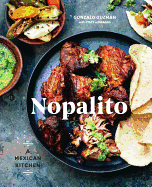
| Publisher: | Ten Speed | |
| Genre: | Mexican, Cooking, Individual Chefs & Restaurants, Regional & Ethnic, American - California Style | |
| ISBN: | 9780399578281 | |
| Pub Date: | April 2017 | |
| Price: | $30 |
| Food & Wine |
by Stacy Adimando, Gonzalo Guzman
Brooklyn food writer Stacy Adimando, co-author of Nopalito: A Mexican Kitchen, says, "Hearing about Mexican cuisine from someone who loves it so much makes you almost homesick for a place you may have never even been to."
Chef Gonzalo Guzman, born in Veracruz, wants home cooks to explore and experiment with Mexican cooking, and shares the recipes "that have made the deepest impression on my heart and live on in my memory since being away from home." While still a teenager, he worked in one of Nopalito founder Laurence Jossel's kitchens. He rose rapidly in the business, and now in his 30s works as the sole chef of both Nopalito restaurants in San Francisco.
Fresh, seasonal ingredients are the hallmark of Guzman's Mexican-by-way-of-California food. He packs tips, secrets and passion into his cookbook, noting the "intricacy, variety and layers of flavors involved." Complexity of flavor doesn't require "fussiness," but does emphasize authenticity. He includes specifics on building a Mexican pantry, including a glossary of chiles and other basics. He stresses making components ahead of time and storing them (pickled jalapeños, fresh cheese and pork sausage are in the early chapter "House Recipes").
Guzman coaches the home cook in a conversational tone: an avocado "should feel slightly spongy but not smushy." Small plates, big plates, drinks, desserts and 15 salsas pack this beautifully photographed cookbook. He is proud that his mama could walk into Nopalito and see "the heart of our family cuisine is still intact in our restaurant kitchen." --Cheryl Krocker McKeon, manager, Book Passage, San Francisco
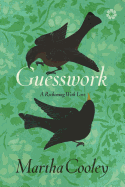
| Publisher: | Catapult | |
| Genre: | Biography & Autobiography, Women, Family & Relationships, Travel, Death, Grief, Bereavement, Europe, Personal Memoirs, Italy | |
| ISBN: | 9781936787463 | |
| Pub Date: | April 2017 | |
| Price: | $16.95 |
| Biography & Memoir |
by Martha Cooley
Each person's experience of profound loss is different. Novelist Martha Cooley (The Archivist) has chosen to describe hers in Guesswork: A Reckoning with Loss, a collection of lyrical personal essays. The 16 shimmering pieces pay homage to a group of recently departed friends while affirming, with a poet's sensibility, life's fragile beauty as Cooley experienced it in a sabbatical year she and her husband spent in a tiny Italian town.
The eight friends whose deaths Cooley experienced over the decade preceding her arrival in Italy include the writers David Markson and Nuala O'Faolain, along with others not as well-known but no less dear to her. Cooley admits that these "accumulated losses have upended me," describing herself as "still down in an emotional crouch, hands over head." Yet one of these deaths--that of her husband Antonio's first wife from cancer--gave birth to the new life of their relationship, prompting Cooley to recall how the two of them stood "the autumn after Valeria's death, arms wrapped around each other, both of us astonished by a love so visceral and unexpected." At some moments explicitly and at others more obliquely, the looming mortality of Cooley's ailing mother, Nancy, also shadows many of these essays.
Cooley's description of a sky that is a "jeweler's pitch-black velvet cloth sprinkled with diamonds" is only one of many examples of her poetic gift of observation. Guesswork is anything but a maudlin work. It's a tribute to the enduring power of friendship and of the ability of love to outlast death. --Harvey Freedenberg, attorney and freelance reviewer

| Publisher: | Minotaur Books | |
| Genre: | Biography & Autobiography, True Crime, United States, General, Law Enforcement, 20th Century, History, State & Local - Middle Atlantic, Political Science | |
| ISBN: | 9781250048943 | |
| Pub Date: | April 2017 | |
| Price: | $26.99 |
| History |
by Michael Cannell
Fascinating true crime stories still require compelling narrators, and Michael Cannell (The Limit) demonstrates he's perfect for the task with Incendiary: The Psychiatrist, the Mad Bomber and the Invention of Criminal Profiling. The New York Police Department of the 1940s and '50s relied heavily on strong-arm methods, which proved ineffective against a schizophrenic serial bomber. The Mad Bomber confounded authorities for 16 years, planting more than 30 devices in public areas. Pressure to catch the faceless bogeyman ultimately forced the department to embrace a method of detection previously used only by literary icons such as Sherlock Holmes.
Psychiatrist James Brussel, the acknowledged father of modern criminal profiling, played a key role in the bomber's arrest. After looking through the police files, he provided details about what type of man he believed the villain to be, describing him down to the suit he would be wearing when captured. The subtitle's emphasis on profiling is, however, somewhat misleading; Incendiary provides a broad view of the case from several intriguing fronts, including psychiatry, forensics, bomb squad technology, the role of media and the changing landscape of criminal insanity laws.
Cannell captures his audience like quicksand with a brief prologue, then sets off on a manhunt rich with historic details and a fantastic sense of time and place--a New York full of trench coats, brimmed hats, long-finned sedans, Checker Cabs and the greatest individual menace the city had yet to face. Incendiary is a firecracker of a case history about one of the country's first terrorists. --Lauren O'Brien of Malcolm Avenue Review

| Publisher: | Avery Publishing Group | |
| Genre: | Self-Help, Personal Growth, Happiness, Buddhism, Inspiration & Personal Growth, Spiritual, Body, Mind & Spirit, Religion, General | |
| ISBN: | 9780399185045 | |
| Pub Date: | September 2016 | |
| Price: | $26 |
| Psychology & Self-Help |
by His Holiness the Dalai Lama and Archbishop Desmond Tutu with Douglas Abrams
Imagine spending a week with Archbishop Desmond Tutu and His Holiness the Dalai Lama, absorbing their wisdom and insights on life. It would be impossible not to emerge transformed, enlightened and irrevocably changed. Such was the experience of Douglas Abrams, who joined his longtime friend and literary collaborator Archbishop Desmond Tutu in April 2015 for a week-long visit with the Dalai Lama at the latter's home in Dharamsala, India.
The Book of Joy: Lasting Happiness in a Changing World gives readers an opportunity to journey alongside Abrams as he shares his extraordinary experience, capturing the two world leaders' conversations and reflections on life and on one of its most essential--and often challenging and elusive--emotions.
"We are fragile creatures," Archbishop Tutu said. "It is from this weakness, not despite it, that we discover the possibility of true joy."
Envisioned as a gift to the world to celebrate the Dalai Lama's 80th birthday, The Book of Joy is structured as a symbolic three-layer cake that aims to provide a practical foundation for cultivating and sustaining joy. Beginning with a "first layer" consisting of the Dalai Lama and Archbishop Tutu's teachings on joy, Abrams elicits answers from the two spiritual leaders on questions reflecting the immediacy of life's real challenges.
"How do we embrace the reality of our lives, deny nothing, but transcend the pain and suffering that is inescapable? And even when our lives are good, how do we live in joy when so many others are suffering: when crushing poverty robs people of their future, when violence and terror fill our streets, and when ecological devastation endangers the possibility of life on our planet?"
Abrams recognizes that these are not simple questions with pat answers; The Book of Joy explores them without caving to convenient platitudes like "don't worry, be happy." Nor does the book reflect any one faith or religion.
"On this planet," the Dalai Lama said, "over the last three thousand years, different religious traditions developed. All these traditions carry the same message: the message of love."
In his symbolic second layer of The Book of Joy, Abrams supports the concept of joy with a jargon-free overview of current scientific explanations that reinforce the neurological benefits of meditation, generosity and compassion. Volunteering, for example, reduces the risk of death by 24%, and people who develop and curate a sense of purpose in life are half as likely to develop Alzheimer's disease after seven years.
"Research suggests that cultivating your own joy and happiness has benefits not just for you, but also for others in your life. It is a virtuous cycle. The more we turn toward others, the more joy we experience, and the more joy we experience, the more joy we can bring to others. The goal is not just to create joy for ourselves but, as the Archbishop poetically phrased it, 'to be a reservoir of joy, an oasis of peace, a pool of serenity that can ripple out to all those around you.' "
This takes practice and, according to the Dalai Lama, developing "mental immunity" is key. "So much of our unhappiness originates within our own mind and heart--in how we react to events in our life. 'Mental immunity,' the Dalai Lama explained, 'is just learning to avoid the destructive emotions and to develop the positive ones.' "
Easier said than done, perhaps, but certainly possible when recognizing how to put into practice the eight pillars of joy: perspective, humility, humor, acceptance, forgiveness (both of ourselves and others), gratitude, compassion and generosity. The first four of these are "qualities of the mind" and the second quartet are "qualities of the heart." Abrams explores each concept with examples, followed by simple and sustainable "joy practices," such as meditation and prompts for further reflection based on these eight pillars. Those, he says, are designed to help overcome the challenges and obstacles that we encounter on our path to true joy.
Sprinkled into the third layer of Abrams's literary confection are delightful morsels of his week with the Dalai Lama and Archbishop Tutu, whom he occasionally affectionately refers to as "Arch," a term of endearment bestowed on the visionary by those closest to him. Despite not having an opportunity to see each other often, the Dalai Lama and Archbishop Tutu enjoy a friendship based on mutual respect and admiration--and one filled with laughter, goodhearted teasing and fun. Abrams frequently describes the octogenarians as mischievous and akin to schoolboy pranksters. "When a Dalai Lama and an Archbishop walk into a bar," he writes, "you don't expect them to be the ones cracking the jokes."
"They and everyone around them were constantly guffawing, chortling, giggling, and belly laughing throughout the week, as moments of great levity were spliced together with moments of profundity and sanctity."
Such is the beauty of this life we live, one that holds tremendous suffering and heartbreak alongside moments of beauty and happiness. It is also the essence of this exquisite book, one that offers an intimate glimpse into the minds of two of the world's spiritual guides, and their foundation for an attainable and practical approach to experiencing a more enriching and sustainable life of abundant joy. --Melissa Firman
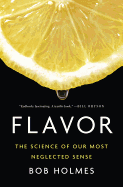
| Publisher: | W.W. Norton | |
| Genre: | Life Sciences, Technology & Engineering, Neuroscience, Cooking, Food Science, Science, Human Anatomy & Physiology, Medical, Essays & Narratives | |
| ISBN: | 9780393244427 | |
| Pub Date: | April 2017 | |
| Price: | $26.95 |
| Science |
by Bob Holmes
In Flavor: The Science of Our Most Neglected Sense, evolutionary biologist Bob Holmes serves up insightful connections about some strange bedfellows. He pairs subtle aromas of wine, the crunch of fresh Pringles and the nuances of a frozen chicken nugget with the particulars of neuroscience, and the results are a sheer delight.
Holmes quickly admits that he lacks a formal culinary background and is no "supertaster." Yet that makes Flavor all the more digestible; his explanations of technical aspects of taste rely not on foodie or scientific jargon but plain English. Even better, Holmes is as funny as he is enlightening. On taste buds, he writes, "Those mushroom-shaped bumps on the surface of the tongue that most people call taste buds are, technically speaking, really fungiform papillae, an impressive-sounding Latin term that means 'mushroom-shaped bumps.' " He also convincingly compares the human brain to a layer cake.
A broad cast of experts populates Holmes's exploration. He hops between continents visiting conferences, labs and restaurants, meeting with scientists, chefs, researchers and wine growers. All five senses, he learns, shape the perception of flavor, as do genetics, neurobiology, culture and the timing of exposure to new foods. Holmes navigates olfaction research, wades through molecular gastronomy and even braves a taste test of a variety of hot peppers, or as he calls it, a "pursuit of pain." He grants that much about flavor remains to be understood, but as studies on the subject continue, Holmes makes a compelling case that its appreciation is a learnable, worthy pursuit that literally makes sense. --Katie Weed, freelance writer and reviewer

| Publisher: | Harper Wave | |
| Genre: | Nature, Nutrition, Weight Loss, Health & Fitness, Plants, Flowers, Diet & Nutrition, Immune & Autoimmune, Diseases | |
| ISBN: | 9780062427137 | |
| Pub Date: | April 2017 | |
| Price: | $27.99 |
| Health & Medicine |
by Steven R. Gundry
Using years of research and case studies, heart surgeon Steven Gundry takes a close look at the intriguing science behind plants, their defensive tactics against predators and how one particular protective measure can cause many illnesses. The large plant protein called lectin, found in seeds, grains, skins, rinds and leaves, is often indigestible for humans, and Gundry analyzes how this protein wreaks havoc on bacteria in the intestinal tract. One well-known lectin is gluten, but there are thousands more in all types of food, including gluten-free grains such as buckwheat, oats and quinoa, as well as in fruits, legumes, certain nuts and animals fed a diet of corn and soybeans. Gundry expertly illustrates how lectins are responsible for multiple health issues, including inflammation, heart disease and a susceptibility to viruses and bacterial infections.
Patients who switch to Gundry's plant paradox eating lifestyle claim to have reversed the effects of diabetes, MS, RA, fibromyalgia, IBS, Crohn's disease, cancer, obesity and a host of other ailments. Gundry's logical and extensive investigation into lectins provides readers with more than enough evidence to take this information to heart and try his method. A comprehensive list of foods with and without lectins, sample menus, multiple recipes and a list of recommended supplements help readers make the switch to a diet that Gundry declares will eliminate numerous illnesses that plague modern humans. --Lee E. Cart, freelance writer and book reviewer

| Publisher: | Greenwillow/HarperCollins | |
| Genre: | Fantasy, General, Romance, Young Adult Fiction, Action & Adventure | |
| ISBN: | 9780062568243 | |
| Pub Date: | May 2017 | |
| Price: | $17.99 |
| Starred | Children's & Young Adult |
by Megan Whalen Turner
Thick as Thieves offers Megan Whalen Turner's fans an eagerly anticipated return to the Queen's Thief world, but it also extends to a new generation a stand-alone introduction to a spectacularly enchanted empire imagined by a master storyteller. Neither group will be disappointed.
Kamet is a slave, but one with significant position. Literate and educated, he is the personal secretary to the prince Nahuseresh, nephew of the Mede emperor and brother to the emperor's chosen heir. His position has encouraged Kamet to envision lofty goals, "Someday [my master] meant to make a gift of me to his brother, and then, as the next emperor's personal slave, I would be one of the wealthiest and most powerful men in all the empire." But when a friend and fellow slave whispers a warning to Kamet, he realizes his life is in grave danger, bringing his aspirations of greatness crashing down around him. Left with no choice, Kamet runs.
The complexity of Turner's world combined with the suspense of her layered plot creates a story that will appeal to readers of all ages. The thrill of the chase is magnetic--as is Kamet's budding and unlikely friendship with an Attolian soldier. This enemy of his master is offering to save Kamet, but is he really just leading the slave to his death? The stakes are high, and Turner keeps the intensity elevated throughout the novel, making it a challenge to tear oneself away from the exploits of this diminutive slave with his larger-than-life personality. --Jen Forbus, freelancer
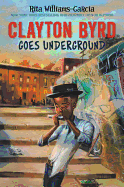
| Publisher: | Amistad/HarperCollins | |
| Genre: | Music, Family, Social Themes, Girls & Women, Juvenile Fiction, Multigenerational, Prejudice & Racism, Performing Arts | |
| ISBN: | 9780062215918 | |
| Pub Date: | May 2017 | |
| Price: | $16.99 |
| Children's & Young Adult |
by Rita Williams-Garcia
Clayton Byrd's "lungs and soul were ready to pour out his own story through the ten square holes of his blues harp" (harmonica). All he wants is to play the blues with his grandfather, Cool Papa Byrd. Although Cool Papa lets him play gigs with his band, the Bluesmen, in Manhattan's Washington Square Park, he won't let him take a solo. Cool Papa says, "When you can bend that note proper, I'll wave you in... a bluesman ain't a bluesman without that deep-down cry."
But before Clayton has a chance to prove himself, trouble finds him, as the song goes. Cool Papa falls asleep reading to Clayton one night, and never wakes up. After a lifetime of resentment over her musician father's long absences, Cool Papa's daughter--Clayton's mother--promptly gives away all his things: the records, the guitars and even Cool Papa's trademark porkpie hat (before Clayton yanks it back). Heartbroken and fed up, Clayton goes underground, skipping school to hop the downtown train in hopes of joining up with the Bluesmen. Trouble keeps finding him, though, in the form of beatboxing young subway hustlers.
Rita Williams-Garcia, author of the Newbery Honor Book One Crazy Summer and their sequels, Gone Crazy in Alabama and P.S. Be Eleven, is masterful in her use of music to tell the story of one boy's coming of age. Clayton is so squarely on the cusp of adolescence; the downbeat of his grief falls in with the sharp percussion of his rage against his mother to produce "that round-the-corner, back-to-tell-the-tale blues bend" the Bluesmen talk about. Readers will willingly accompany Clayton and his family in this aching blues riff. --Emilie Coulter, freelance writer and editor